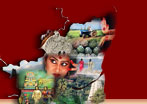| |
 |
|
|
||||||||||||||||||||||||||||||||||||||||||||||||||||||
| |
 |
 |
|
||||||||||||||||||||||||||||||||||||||||||||||||||||||
| |
|
|
|
||||||||||||||||||||||||||||||||||||||||||||||||||||||
| |
|
|
|
|
|
|
|||||||||||||||||||||||||||||||||||||||||||||||||||
| |
|
|
|||||||||||||||||||||||||||||||||||||||||||||||||||||||
| |
|
||||||||||||||||||||||||||||||||||||||||||||||||||||||||
| |
|
|
|
||||||||||||||||||||||||||||||||||||||||||||||||||||||
| |
|
||||||||||||||||||||||||||||||||||||||||||||||||||||||||
| |
|
|
|||||||||||||||||||||||||||||||||||||||||||||||||||||||
| |
|
||||||||||||||||||||||||||||||||||||||||||||||||||||||||
| |
|
|
|
||||||||||||||||||||||||||||||||||||||||||||||||||||||
| |
|
||||||||||||||||||||||||||||||||||||||||||||||||||||||||
| |
|
||||||||||||||||||||||||||||||||||||||||||||||||||||||||
 |
 |
 |
|
||||||||||||||||||||||||||||||||||||||||||||||||||||||
| |
 |
|
|
||||||||||||||||||||||||||||||||||||||||||||||||||||||
| |
 |
|
|
||||||||||||||||||||||||||||||||||||||||||||||||||||||
| |
|
|
|
||||||||||||||||||||||||||||||||||||||||||||||||||||||
 |
|
|
|||||||||||||||||||||||||||||||||||||||||||||||||||||||
| |
 |
|
|||||||||||||||||||||||||||||||||||||||||||||||||||||||
| |
|
|
|||||||||||||||||||||||||||||||||||||||||||||||||||||||
| |
|
||||||||||||||||||||||||||||||||||||||||||||||||||||||||
| |
 |
|
|
||||||||||||||||||||||||||||||||||||||||||||||||||||||
| |
|
||||||||||||||||||||||||||||||||||||||||||||||||||||||||
| |
|
|
|||||||||||||||||||||||||||||||||||||||||||||||||||||||
| |
|
||||||||||||||||||||||||||||||||||||||||||||||||||||||||
| |
|
||||||||||||||||||||||||||||||||||||||||||||||||||||||||
| |
|
|
|||||||||||||||||||||||||||||||||||||||||||||||||||||||
| |
 |
|
|
||||||||||||||||||||||||||||||||||||||||||||||||||||||
| |
|
|
|
||||||||||||||||||||||||||||||||||||||||||||||||||||||
| |
|
||||||||||||||||||||||||||||||||||||||||||||||||||||||||
| |
|
|
|
|
|||||||||||||||||||||||||||||||||||||||||||||||||||||
| |
|
||||||||||||||||||||||||||||||||||||||||||||||||||||||||
| |
|
|
|||||||||||||||||||||||||||||||||||||||||||||||||||||||
| |
|
||||||||||||||||||||||||||||||||||||||||||||||||||||||||
| |
 |
|
|
||||||||||||||||||||||||||||||||||||||||||||||||||||||
| |
|
||||||||||||||||||||||||||||||||||||||||||||||||||||||||
| |
|
|
|||||||||||||||||||||||||||||||||||||||||||||||||||||||
| |
|
||||||||||||||||||||||||||||||||||||||||||||||||||||||||
| |
|
|
|
||||||||||||||||||||||||||||||||||||||||||||||||||||||
| |
|
|
|
|
|||||||||||||||||||||||||||||||||||||||||||||||||||||
| |
|
||||||||||||||||||||||||||||||||||||||||||||||||||||||||
| |
|
||||||||||||||||||||||||||||||||||||||||||||||||||||||||
| |
|
|
|||||||||||||||||||||||||||||||||||||||||||||||||||||||
| |
 |
|
|
||||||||||||||||||||||||||||||||||||||||||||||||||||||
| |
|
|
|||||||||||||||||||||||||||||||||||||||||||||||||||||||
| |
|
||||||||||||||||||||||||||||||||||||||||||||||||||||||||
| |
|
||||||||||||||||||||||||||||||||||||||||||||||||||||||||
| |
|
||||||||||||||||||||||||||||||||||||||||||||||||||||||||
| |
|
|
|
||||||||||||||||||||||||||||||||||||||||||||||||||||||
| |
|
||||||||||||||||||||||||||||||||||||||||||||||||||||||||
| |
|
||||||||||||||||||||||||||||||||||||||||||||||||||||||||
| |
|
||||||||||||||||||||||||||||||||||||||||||||||||||||||||
| |
|
|
|||||||||||||||||||||||||||||||||||||||||||||||||||||||
| |
 |
|
|
||||||||||||||||||||||||||||||||||||||||||||||||||||||
| |
|
||||||||||||||||||||||||||||||||||||||||||||||||||||||||
| |
 |
|
|
||||||||||||||||||||||||||||||||||||||||||||||||||||||
| |
|
||||||||||||||||||||||||||||||||||||||||||||||||||||||||
| |
|
|
|
|
|||||||||||||||||||||||||||||||||||||||||||||||||||||
 |
|
||||||||||||||||||||||||||||||||||||||||||||||||||||||||
| |
|
||||||||||||||||||||||||||||||||||||||||||||||||||||||||
| |
|
|
|||||||||||||||||||||||||||||||||||||||||||||||||||||||
| |
|
||||||||||||||||||||||||||||||||||||||||||||||||||||||||
| |
 |
|
|
||||||||||||||||||||||||||||||||||||||||||||||||||||||
| |
 |
|
|
||||||||||||||||||||||||||||||||||||||||||||||||||||||
 |
|
||||||||||||||||||||||||||||||||||||||||||||||||||||||||
 |
|
||||||||||||||||||||||||||||||||||||||||||||||||||||||||
| |
 |
|
|
||||||||||||||||||||||||||||||||||||||||||||||||||||||
 |
|
||||||||||||||||||||||||||||||||||||||||||||||||||||||||
| |
|
||||||||||||||||||||||||||||||||||||||||||||||||||||||||
| |
|
||||||||||||||||||||||||||||||||||||||||||||||||||||||||
| |
|
|
|
|
|
|
|
|
|
|
|
|
|
|
|
|
|
|
|
|
|
|
|
|
|
|
|
|
|
|
|
|
|
|
|
|
|
|
|
|
|
|
|
|
|
|
|
|
|
|
|
|
|
|
|
|
|
The Tamil language is spoken mainly in Southern India. It is a member of the Dravidian language family, a group of about thirty languages (~225 million speakers in total) concentrated in southern India, but also in Pakistan as well. The Dravidian language family is distinct from the Indo-European language family (which includes Hindi and many other Indian languages, Farsi, and the Germanic and Romance languages among others). Of all Tamil speakers (totalling about 65 million) Over ninety percent live in Tamil Nadu, one of India's four southern states. However, Tamil is also spoken in neighboring states as well as both a first and second language. Northern Sri Lanka, located across the Palk Bay from Tamil Nadu, has a sizable Tamil speaking minority numbering 20% of the population (3-4 million). However, Tamil is not confined to South Asia. It is also spoken by sizable populations in South East Asia (Malaysia, Singapore, and Fiji) as well as in South Africa and parts of East Africa, Great Britain, the United States, Canada, and Trinidad, Guyana, Mauritius. It is an official language in India, Sri Lanka, and Singapore. It has a long literary tradition dating to antiquity and has been spoken and written in southern India for several thousand years (the earliest inscriptions date from 200 BC). The oldest literature, the Sangam literature, is a poetic tradition that deals mainly with love (Akam literature) and war (Puram literature). However, the ancient Tamil literary tradition also spans topic such as grammar (Tolkappiyam), philosophy and ethics (Tirukkural), as well as epics. Tamil, from Sangam on, has been written in a syllabic script (called the Grantha script) derived from the Brahmi script (dating from 2000 B.C). Contra a phonetic script (an alphabet) where each written symbol represents a phonetic unit (like a consonant or vowel) and words are combined from these letters, in a syllabic script symbols stand in for syllables (e.g., க, ka, and கு, ku, are separate symbols). In addition to these, there are symbols that denote the vowels and the consonants in isolation. Tamil is a diglossic language. This means that there is a large disparity between the written form of the language and the spoken form. These differences include grammatical differences, vocabulary differences, and pronunciation differences. As the Tamil literary tradition is a source of pride, especially its antiquity and purity, written Tamil has traditionally been attempted to be kept relatively conservative to change. The literary form is considered the high, or prestige, form and the spoken variety a low status form by all social classes. This means that, by and large, literary Tamil is used in formal occasions and settings--most literature, media (including radio and television), political speeches, etc.--whereas the spoken form is used in everyday conversation. Despite this diglossia, Tamil like all other languages, has received influence from other languages. Historically, one of the main sources for loan words has been Sanskrit, an Indo-European language that is a sister language of Latin and Greek, and a parent language of Hindi, Bengali, and other northern Indian languages. Beside Sanskrit, Persian and Arabic words have also has their impact on Tamil. However, since colonial times and culture contact with the British, English has become the most influential language on the Tamil language (e.g., loan words) as well as on the Tamil speakers (English is a prestige language that gives access to the government, jobs, etc.). At the same time, the influence of English has co-occurred with pro-Tamil movements--for example, the Tamil purism movement begun by Maraimalai Adigal in the 19th century and carried on by the Dravidian political parties (DMK, AIADMK). |